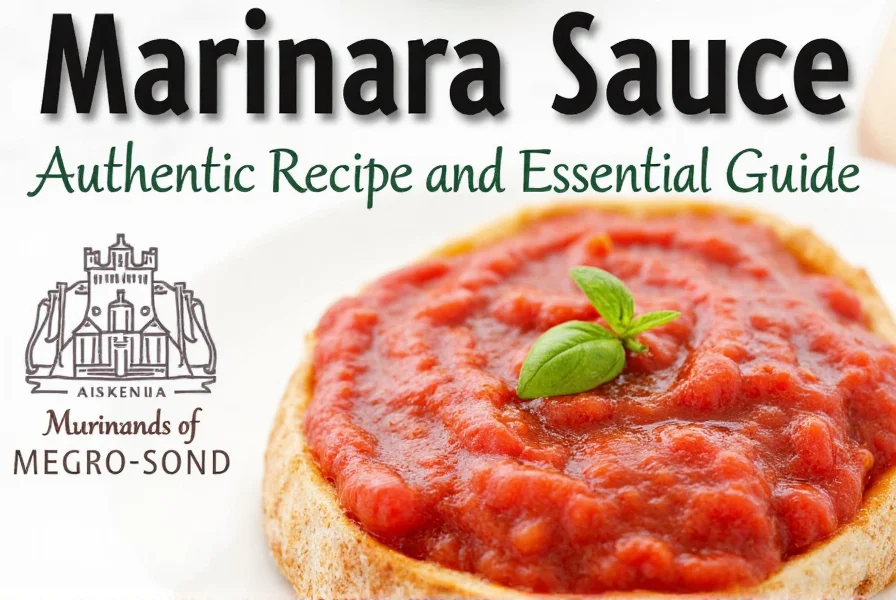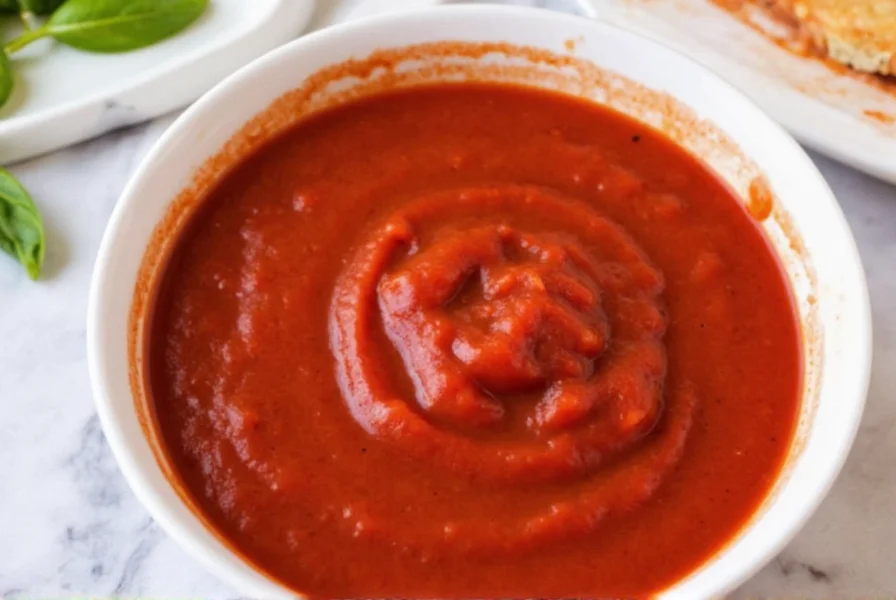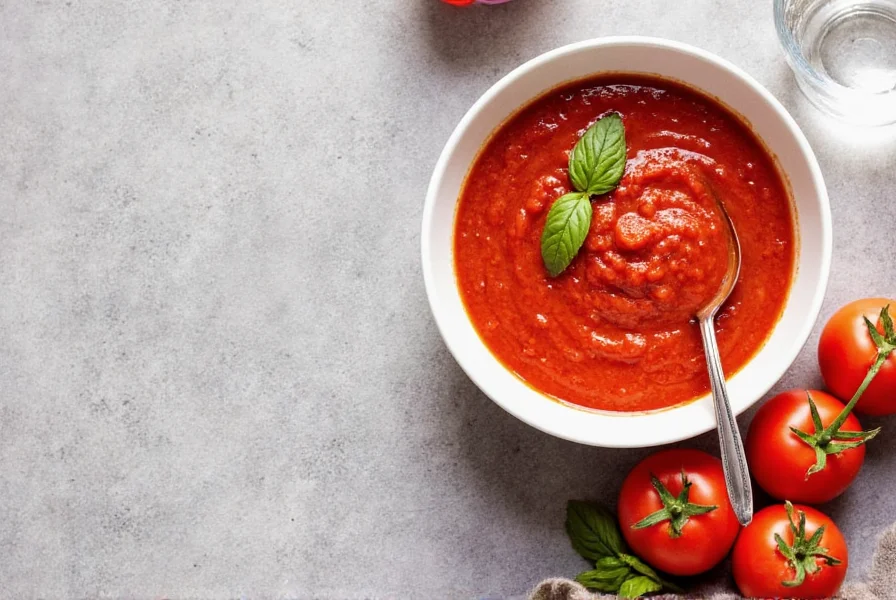Understanding authentic marinara sauce begins with recognizing its simplicity and historical roots. Unlike many Americanized versions, traditional marinara contains no meat, cheese, or excessive sugar. This essential Italian staple has evolved from humble sailor's fare to a globally recognized culinary foundation.
The Historical Origins of Marinara Sauce
The name "marinara" translates to "seafarer's style" in Italian, reflecting its origins among Naples fishermen who needed quick, shelf-stable meals during extended voyages. Historical records from 16th century Naples document this simple preparation method using readily available ingredients that could withstand maritime conditions.
Contrary to popular misconception, marinara wasn't originally a pasta sauce. It began as a topping for seafood and crusty bread, only becoming associated with pasta as the dish gained popularity across Italy. The sauce's acidity helped preserve food during long sea journeys, while its garlic content was believed to ward off illness.
Essential Ingredients in Authentic Marinara
True Neapolitan marinara requires only four core components:
- San Marzano tomatoes (DOP-certified when possible)
- Fresh garlic
- Extra virgin olive oil
- Fresh basil or dried oregano
The quality of tomatoes makes the most significant difference in authentic marinara preparation. San Marzano varieties grown in the volcanic soil near Mount Vesuvius provide the ideal balance of sweetness and acidity. Many professional chefs insist that proper marinara should never contain onions, carrots, celery, or wine—ingredients more characteristic of tomato-based ragù sauces.

Marinara vs. Other Tomato-Based Sauces
Understanding the distinctions between similar Italian sauces prevents culinary confusion. The following comparison clarifies key differences:
| Sauce Type | Preparation Time | Key Ingredients | Texture |
|---|---|---|---|
| Marinara | 20-30 minutes | Tomatoes, garlic, herbs, olive oil | Smooth, slightly chunky |
| Tomato Sauce | 45-90 minutes | Tomatoes, mirepoix, herbs, sometimes meat | Thicker, more complex |
| Pomodoro | 45-60 minutes | Tomatoes, garlic, herbs, olive oil, sometimes butter | Creamier, richer |
| Ragù | 2-6 hours | Tomatoes, meat, mirepoix, wine | Meat-based, hearty |
Traditional Preparation Techniques
Authentic Neapolitan chefs follow specific methods when preparing marinara:
- Heat olive oil gently in a heavy-bottomed pot
- Sauté garlic until fragrant but not browned
- Add crushed tomatoes and herbs
- Maintain gentle simmer for 20-30 minutes
- Finish with fresh basil and additional olive oil
The critical factor is avoiding overcooking, which diminishes the sauce's bright acidity. Professional chefs emphasize that marinara should maintain a vibrant red color, not darken significantly during preparation. The sauce thickens slightly as it cools, achieving its ideal consistency at room temperature.
Variations Across Italian Regions
While Neapolitan marinara remains the gold standard, regional variations exist throughout Italy:
- Sicilian versions often include capers and olives
- Roman preparations sometimes incorporate a pinch of red pepper flakes
- Ligurian adaptations might feature fresh marjoram instead of basil
- Southern Calabrian versions occasionally include anchovies for umami depth
These regional differences reflect local ingredient availability while maintaining the sauce's essential character. Authentic variations never compromise the fundamental simplicity that defines proper marinara.
Authentic Marinara Sauce Recipe
Yield: 4 servings | Preparation: 10 minutes | Cooking: 25 minutes
Ingredients:
- 28 oz (800g) San Marzano tomatoes, crushed by hand
- 3 tbsp extra virgin olive oil
- 3 garlic cloves, thinly sliced
- 5 fresh basil leaves
- 1 tsp dried oregano
- Kosher salt to taste
Instructions:
- Heat olive oil in a heavy-bottomed saucepan over medium-low heat
- Add garlic and sauté until fragrant (about 2 minutes)
- Add tomatoes, oregano, and 1/2 teaspoon salt
- Simmer uncovered for 20-25 minutes, stirring occasionally
- Remove from heat and stir in fresh basil
- Adjust seasoning and finish with additional olive oil
This traditional marinara preparation yields a sauce with balanced acidity and rich tomato flavor. For best results, use the sauce immediately or store properly for later use.

Storage and Preservation Methods
Proper storage maintains marinara's fresh flavor profile:
- Refrigerate in airtight container for up to 5 days
- Freeze in portion-sized containers for up to 6 months
- Preserve through canning using proper sterilization techniques
- Never store at room temperature for more than 2 hours
When reheating, do so gently over low heat to preserve flavor integrity. Adding a small splash of water can restore ideal consistency if the sauce has thickened during storage.
Conclusion
Authentic marinara represents Italian cuisine's philosophy of quality ingredients prepared simply. Its enduring popularity stems from versatility across numerous dishes while maintaining distinctive character. Understanding what defines genuine marinara—its ingredients, preparation methods, and historical context—elevates both cooking and dining experiences. Whether used traditionally with pasta, as a pizza base, or in creative modern applications, proper marinara delivers unmatched flavor when prepared with respect for its culinary heritage.
Frequently Asked Questions
What's the difference between marinara and spaghetti sauce?
Marinara is a specific, quick-preparation tomato sauce made with tomatoes, garlic, herbs, and olive oil without meat or cheese. Spaghetti sauce is a broader American term that often includes additional ingredients like meat, vegetables, and extended cooking times, making it more similar to Italian ragù than authentic marinara.
Can I use regular tomatoes instead of San Marzano for marinara?
While San Marzano tomatoes grown in the Sarno river valley near Naples provide the ideal balance of sweetness and acidity for authentic marinara, you can substitute high-quality canned plum tomatoes. Look for tomatoes with low moisture content and rich flavor. Avoid tomato varieties with excessive sweetness or watery consistency, as these compromise marinara's characteristic bright profile.
Why shouldn't marinara contain onions or carrots?
Traditional Neapolitan marinara specifically excludes onions, carrots, and celery (the soffritto base of many Italian sauces) because these ingredients fundamentally change the sauce's character. These additions create a different sauce profile more characteristic of ragù or tomato sauce. Authentic marinara's appeal lies in its simplicity and bright tomato flavor unaltered by sweet vegetables.
How can I fix overly acidic marinara sauce?
If your marinara tastes too acidic, add a small pinch of baking soda (1/8 teaspoon at a time) while tasting. Alternatively, a teaspoon of grated carrot cooked with the sauce can naturally balance acidity without adding noticeable sweetness. Never use sugar in authentic marinara, as this compromises its traditional flavor profile.











 浙公网安备
33010002000092号
浙公网安备
33010002000092号 浙B2-20120091-4
浙B2-20120091-4